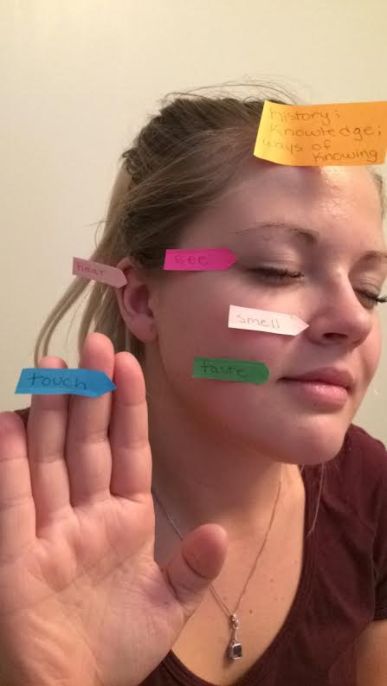Wilderness Beyond Our Senses
On a beautiful spring day my middle school class was given the opportunity to take a trip to Fort Walsh in the Cypress Hills. The buildings and the people looked authentic and the atmosphere felt like we were taken back to the many years ago that the Fort was still occupied. This trip was not just a history lesson about the Cypress Hills land, the Aboriginal peoples who lived there and the settlers who invaded. Walking through the Fort was almost like reliving reality, it was learning about the land and recognizing the thousands of Aboriginal peoples who died trying to protect their Creator’s land from settlers. It was incredibly surreal, even for me as a middle school student.
I feel like that fieldtrip was not a typical canoe pedagogy, because we were given the opportunity to discuss and learn about the land and the peoples who had lived there. Newberry states, “I believe that much canoe pedagogy similarly paints scenic and inspiring pictures for students.” (p 42). And I believe that we did not just simply stare at the scenery, feel the crisp water, and breathe in the clean air, rather we became more connected and educated about the land around us that day. Newberry also talks about how outdoor education needs to become more complex and that we should talk about ethnicity and I believe that my teacher and the people at Fort Walsh accomplished this that day. It would be a field trip I would love to take my students on someday.
During the Treaty Ed Camp we attended I had the pleasure of listening to Elder Starblanket. I listened as he passionately discussed Fort Qu’Appelle and the history of his people there. He discussed some other historical events too which have hindered his people. I found this fascinating and felt the lecture on a whole new level, hearing it from someone who has lived it and felt it himself. The girl helping with this station discussed after, an event in Fort Qu’Appelle that is a truly engaging learning experience for people of all ages. She highly recommended school trips to Fort Qu’Appelle, especially at this time to truly learn the complexity of Treaty 4 and the peoples before settlers came. I thought that between her and Elder Starblanket they are really pushing towards Newberry’s belief that EE and Outdoor Ed need to become more complex and need to open wounds and the hard truth about what has been done to make our environment how it is today.
Canadian wilderness now has a more complex and diverse meaning to me than just animals, trees and dirt. Our wilderness needs to be discussed in more depth, we need to start thinking critically about why the land we are on is what it is. We need to talk about how we have shaped the wilderness, how we have influenced it compared to people many years before us. I think like Newberry, Elder Starblanket, the other guest speaker, and even the people at Fort Walsh have done an excellent job bringing forward these complexities and deeper thoughts about wilderness and the land we live on. I hope in the future I can open the same doors for my students and that they will begin to see the wilderness as more than just flowers, grass, rivers, and animals. But rather they will talk about why and how the wilderness has been shaped.

This was such a great read, Justine! I am having troubles finding anything wrong with it, to be honest. I guess something to consider would be the balance between euro-western environmental education and aboriginal ways of knowing the land. Both ways of knowing are extremely important to knowing how Canada’s people will be seeing and viewing the land. That’s better history, and I love that you want to teach from a holistic perspective.
LikeLike